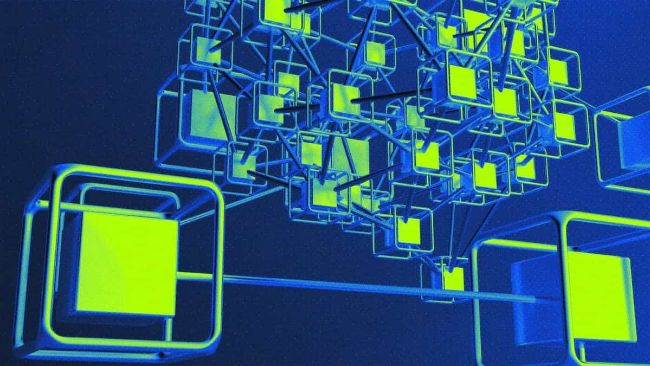Bitcoin has a scaling problem.
It is designed to promote payments that are independent of trustworthy third parties, and to achieve this, all users must be able to verify to ensure that they are valid without trusting the words of third parties.
These two are the opposite.
If the system promotes everyone who wants to trade it on the blockchain, the cost of people verifying all of these transactions will increase dramatically, forcing most people to trust third parties who can pay those costs. If the system maintains low-cost verification for participants, then anyone who cannot trade cost-effectively on the blockchain cannot do so.
Scaling Bitcoin in Layer 2, right? But what does that mean? I’m sure most people reading this will hear the term scaling and immediately think purely from a transactional perspective. The more transactions you can do with Bitcoin with assets per second, the more scaling you get, right?
I argue no. It’s a huge part of it, but that’s not the only thing we’re trying to expand. We are looking to expand the key properties of Bitcoin as a censorship resistant system. If you didn’t mind the scaling aspect, you could already call it a day. We have exchanges, banks and other centralized custodians.
Reliability
To maintain reliability, you need a solution built for throughput scalability. Users do not need to rely on the integrity of other parties to ensure the security of their funds. Among some restrictions, users must have the ability to guarantee ownership of funds in response to the actions of other parties.
This does not necessarily mean the same security model as blockchain. This means that when you send your funds to your address, there is no other action required other than keeping your keys safe. Users may need to stay online, check in online periodically within a defined time frame, or store data that cannot be deterministically played, but they should be able to ensure that their funds are under control.
The finality of reconciliation
Users need to have a high degree of certainty that the transactions they have made are final and cannot be rewinded. This is the entire core function that the blockchain fills with the system, processing transactions and ensuring finality of the payment.
Currently there is no Layer 2 system actually Off-chain payment finality. They provide federal, custodian, system operator, or option Exercise settlement finality when the user wishes in the form of a pre-signed transaction.
Theoretically ideal Layer 2 system provides the very real settlement finality itself in chains. While this may not be possible in practice, you need to search for stronger payment guarantees offered by third parties and search for more flexible and efficient designs of finality “options” in the form of a one-sided exit scheme for Layer 2.
Fee
The cost of users using these systems must be kept to a minimum. This is very related to reconciliation of ultimate efficiency. If the reconciliation finality option is too high, the user chooses a system that delegates guarantees to third parties.
The cost of using a blockchain is based on the amount of data used. The more data you have, the more expensive it becomes. As block space becomes more demanded and fees increase, users need to be able to exercise their final options.
Activation requirements
All current Layer 2 that actually provide the option of settlement finality has some form of liability requirements. This means that users must stay online or get it online regularly to ensure the unreliable nature and payment characteristics of that layer 2.
Systems like Lightning require you to be online at all times, to keep third parties online and to monitor the blockchain, or to explicitly trust people who have their channels open so they don’t want to steal money in old states. Systems like ARK require checking in online and spinning coins as ARK batches expire and operators can wipe out all funds.
The only way out of this is to delegate the finality of the settlement and the unreliable security of the funds to a third party. We need to reduce the active requirements as much as possible for the system we do. do not have Delegates control to third parties.
Put it all together
Only after thinking about these properties you want to keep during throughput scaling can you actually start thinking about the features needed by the Bitcoin protocol itself to facilitate that scaling.
Because the current Layer 2 is unreliable, the user must be involved in approving balance updates in a chain. This requires users to interact with each other to approve the update. Obviously, bitcode opcodes or modifications that allow users to sign pre-efficiently and quickly for transactions that enforce the finality of the settlement is beneficial to maintain reliability during scaling.
To go further, we have made some of the UTXO available at our disposal by one authorized user, but the balance remaining remains limited and accessible to others, eliminating the need for users to adjust everything and minimises the starting point of the protocol.
Thinking about the end result we want is a specific term for the desired property we want, and is what we need to really extend this protocol over the long term. Only then can we take a step back and think about the specific features that the desired final result is required at the technical level.
Scaling Bitcoin doesn’t just increase the number of transactions you can process per second. We can now do it with the Custodian. Scaling Bitcoin is to increase the number of transactions that can be unreliable, with censorship resistant finality, without the burden of user responsibility requirements, and at the cost that more users can afford, and at the cost they can afford.
If you can’t scale these properties, then Bitcoin is not actually scaled.
What does Bitcoin scaling mean? What are we scaling? It first appeared in Bitcoin Magazine and is written by Shinobu.


